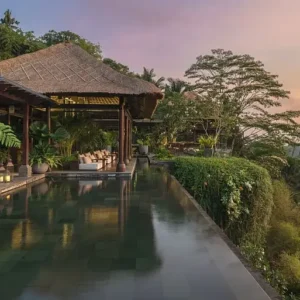Mingun is famous for its many Buddhist shrines, monasteries, meditation centers and monuments of historical and cultural importance. It makes a good half-day trip from Mandalay.
Mantara Gyi Pagoda
Something you can’t miss no matter how you arrive in Mingun is an enormous mound of bricks. It’s an unfinished stupa, built by King Bodawpava’s prisoners-of-war and slaves way back in the late 1790’s. The king decided he would build the biggest pagoda the world had ever seen. It’s 72 meters wide and was supposed to be 152 meters high when finished.
His slaves worked on it for about 30 years. When the pagoda’s shrine room was complete it is said Bodawpaya filled it with all the treasures he could get his hands on – gold, silver, and artifacts of all kinds.
By the turn of the 19th century, the economy of the country was on the verge of collapse, and that finally compelled the king to stop work on the pagoda. He died in 1819 and not one of his 122 children, was prepared to complete the task. Twenty years after his death the massive structure was cracked by an earthquake. Until 2012 you could still climb it, but then another earthquake damaged it even more so it’s unsafe to climb now.
There is a small chamber used as a place of worship, and there is still a wide white staircase leading from the unfinished stupa, down to the river which is guarded at the bottom by two large lion statues.
Mingun Bell
Another of Bodawpaya’s achievements is the second largest working bell in the world which was meant to be installed at the top of the giant stupa. It was cast in bronze in 1808 and weighs 90 tonnes. The Mingun Bell reigned as the largest ringing bell in the world until 2000, when it was eclipsed by the 116-ton Bell of Good Luck at the Foquan Temple in China.
Apparently, after the bell was completed, the king had the master craftsman killed to make sure he never again made anything as big. The Mingun Bell was knocked off its supports as a result of a large earthquake in 1839 but was re-suspended in 1896.
Like everyone else, international and local tourists alike, we crawled under and inside the bell. Unfortunately, there is graffiti inside the bell from people suffering from an inferiority complex who need to put their names wherever they visit.
Hsinbyume Pagoda
One of Bodawpaya’s grandsons had this pagoda built in 1816 dedicated to his first consort, Princess Hsinbmme, the Lady of the White Elephant, who died in childbirth, and who was also one of Bodawpaya’s granddaughters. It is built as a representation of the Sulamani Pagoda which, according, to the Buddhist plan of the cosmos, stands atop Mount Meru and is the center of the universe.
The seven wavy terraces around the pagoda represent the seven mountain ranges around Mount Meru. There are also many small statues on the Pagoda representing various nat spirits, ogres, and naga serpents. This pagoda was badly damaged in 1838 by an earth quake but King Mindon restored it in 1874.
It is possible to climb the stairway to the top of the structure and there are great views of the Irrawaddy River and the nearby Mingun Pagoda. The temple complex is completely walled with a large gate providing access to the grounds. Local Buddhist people come to pay homage, make offerings and light incense sticks.
The pagoda opens daily during daylight hours. Entrance to Hsinbnune Pagoda requires a ticket for the Sagaing – Mingun archaeological zone.
Mingun Sayadaw Museum
The Mingun Sayadaw was a monk, best known for his memory skills. From 1930 until his death in 1993, he was based in Mingun. In 1933, he was conferred the rare title of Pahtamakyaw as he passed the highest level religious examination in the country.
In 1953, he became the first monk ever to be awarded the title of Tipitakadhcira. In the Sixth Buddhist Council held in 1954-56, he was considered the expert on the Vinaya, the portion of the Tripitaka dealing with disciplinary rules.
In 1985, the Guinness Book of Records recorded the Sayadaw as a record holder in the Human Memory category. The exact entry was ‘’Human memory: Bhandanta Vicitsara recited 16,000 pages of Buddhist canonical text in Rangoon, Burma in May 1954. Rare instances of eidetic memory – the ability’ to project and hence ‘visually’ recall material – are known to science.” This museum commemorates his work.
Mingun Home for the Aged
Although it is nothing like Mingun’s other attractions, many visitors choose to come here. The home was founded by Daw Oo Zun in 1915 with a view to looking after old destitute people in need of care and comfort.
In the Myanmar Buddhist tradition, elderly people are usually taken care of by family, but the residents of the Buddhist Home for Aged People don’t have any family members, so they are considered orphans, needing to be taken care of by the community. It was the first home for the aged establish in Myanmar and is entirely supported by donations from devout Buddhists and foreign tourist. About 100 residents live here.
Buddha images from the Ava period
Buddha images from different periods have different characteristics. Those from the Ava period usually have a large forehead, an oval shaped face and a pointed chin. The eyebrows are curved, the bridge of the nose is straight and low, while the lips are small.
Various materials were used to create Buddha images. Wood, bronze, and marble were all used. Many were painted with lacquer and then adorned with gold. Buddha images fashioned in sandstone were very rare.





